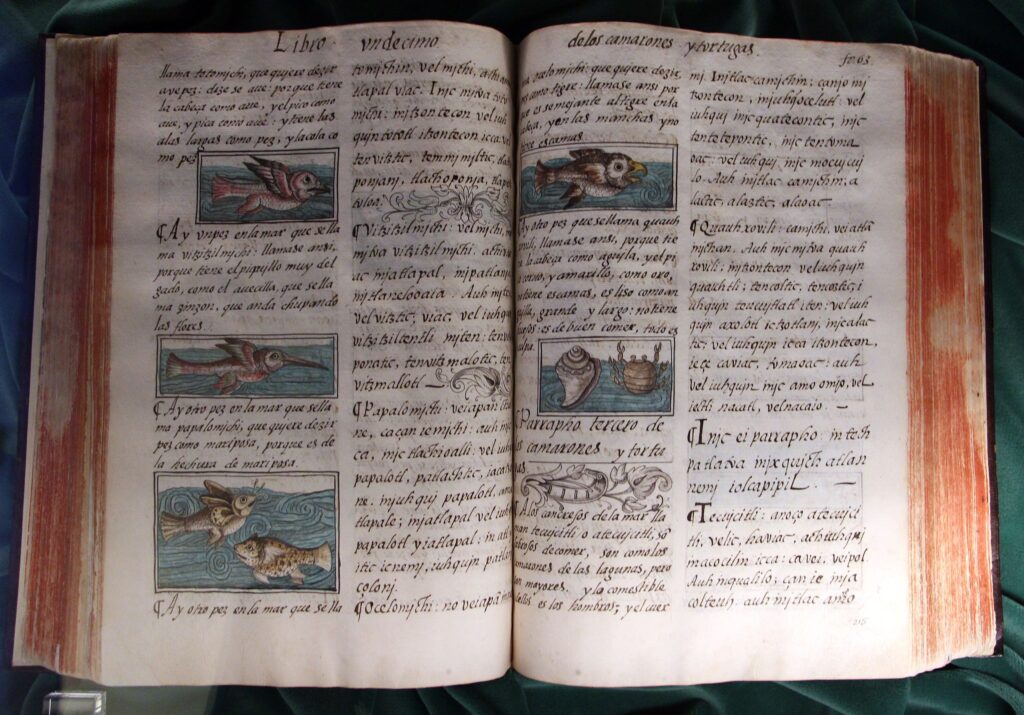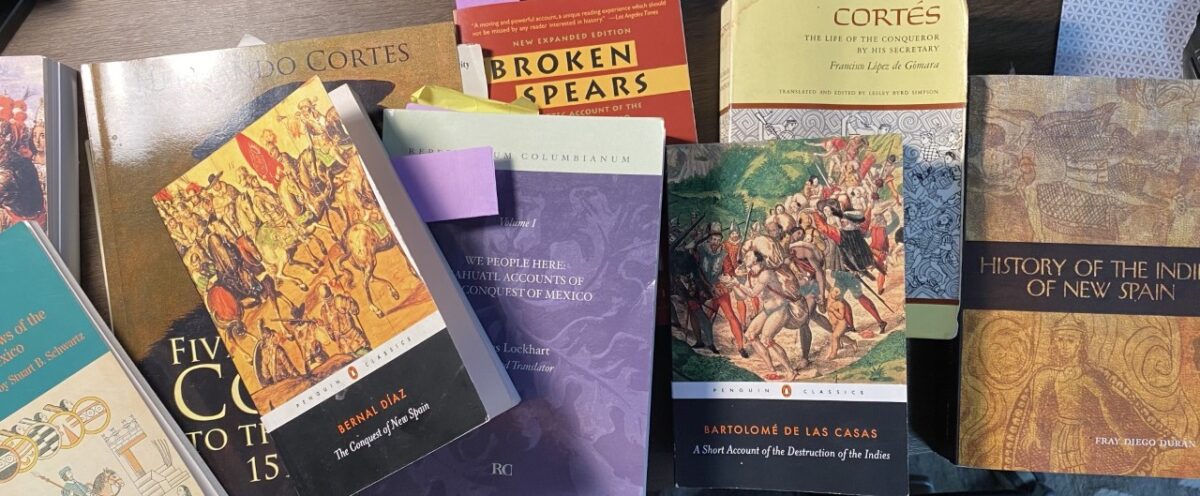Some of the classic sources for the Fall of Tenochtitlan can be defined in several ways. I’ll define them in two categories: European sources and Mestizo/Indigenous sources. There are many other sources, but these are what I consider the main primary, or early secondary sources.
European Sources
Bernal Diaz del Castillo – The Conquest of New Spain
Diaz was one of the conquistadors on the expedition with Cortes. After reading the accounts written by Gomara and several others he produced his own telling while in his 80s. Numerous times in his text he calls out, by name, others who were critical or simply mistaken in their own tellings. The Conquest in considered a mostly reliable telling, understanding the bias of a conquistador and the memory of an old man. This book is widely available.
Gomara – Cortes: the Life of the Conqueror
Gomara never went to Mexico but apparently was entrusted by Cortes to write the detailed telling of his story. The bias in this piece is that Gomara seems to always paint a shiny aura on Cortes. Perhaps as an employee it behooved him to do so. It does offer a fairly clear chronologic telling, if not off in a few places.
Hernan Cortes – Letters to the King Charles of Spain
Cortes wrote five letters to King Charles of Spain. One was lost to history, and people tend to accept the letter written by all the officials of Vera Cruz as a fair substitute. And in his second letter he outlines a little bit of what he talks about in the first, which gives some clues. These letters are highly suspect as they are from a power-hungry, and somewhat shady, conquistador to the King of Spain seeking various levels of favor. They do offer some narrative that illuminates and validates other tellings. These letters are printed in various version and is widely available.
Bartolome de las Casas – A Short Account of the Destruction of the Indies
Bartolome was like a roving hippy priest. He followed in the footsteps of the conquistadores documenting the destruction wrought by the Europeans. His book covers the pillaging of several regions of the New World, including Tenochtitlan and the work of Cortes. The outrage in his heart flows through the words he wrote. This book is widely available.
Mestizo-Indigenous Sources
While most of the pre-contact documents, or codices, were destroyed a few survived and the art continued for several generations after the Conquest. While the art carried on the artisans had largely been converted to Christianity and likely adopted some of the historic views of the Conquest along with it.
Sahagun, with Indigenous scribes – Florentine Codex
Sahagun documented many things from the New World and relied on many Indigenous sources to create his epic telling of the history of the Valley of Mexico. In a massive multi-volume codex he recorded much of the history of the people, including the Conquest. This book is available, but expensive to attain the entire set due to it’s size.

Diego Duran – History of the Indies of New Spain
Diego Duran arrived in Tenochtitlan as a boy, the son of Spanish settlers who arrived shortly after the Conquest. He grew up in the streets of what was becoming Mexico City. Working with numerous sources he created his extensive version of the history of the people of New Spain.
Tezozomoc – Cronica Mexicayotl
Fernando Alvarado Tezozomoc was an Indigenous translator and writer who was the grandson of Moctezuma and related to other noble lines. Using his royal education he wrote the Cronica and several other historic pieces spanning the entirety of Mexica history. This book is available, but can be expensive.

